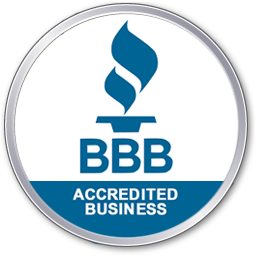Key Takeaways
- Wildfire smoke can contain a mixture of pollutants, including particulate matter, carbon monoxide, and VOCs, that can infiltrate homes or commercial buildings, thereby lowering indoor air quality (IAQ).
- If a wildfire smoke event occurs, you can maintain your IAQ by creating a clean room, using high-efficiency filters in your HVAC system, and employing portable air cleaners.
- In addition to avoiding outdoor activities in smoky conditions, you should also modify your indoor operations by avoiding open flames, using electric cooking methods, and limiting activities that generate humidity.
- You should consistently monitor outdoor air quality and contact a trusted environmental remediation company to address smoke damage.
Learning How to Fortify Indoor Air Quality Against Wildfire Smoke
Unfortunately, the United States experiences an average of 70,000 wildfires each year. It is easy to see the distressing damage caused by the flames themselves, but it is important to remember that the smoke produced by the wildfire can also impact your property and pose health risks. In fact, many people notice a substantial reduction in indoor air quality during wildfires.
Wildfire smoke is known to carry several pollutants, including particulate matter and carbon monoxide, which can infiltrate homes and commercial properties, especially if entry points are improperly sealed. Thankfully, there are several steps you can take to minimize how much wildfire smoke affects indoor air quality, from creating a clean room to using high-efficiency furnace filters and portable air cleaners.
The guide below will teach you how to improve indoor air quality during wildfires and common restoration techniques if your IAQ has already been affected. Still, it is advisable to consult a trusted environmental professional for expert advice tailored to your specific situation.
Understanding Air Pollutants from Wildfires
Wildfire smoke contains a complex blend of various pollutants that can infiltrate homes and commercial properties. By lingering inside, wildfire smoke does affect indoor air quality. Property owners need to understand the potential components of wildfire smoke and their corresponding health effects to develop an effective plan for protecting air quality.
Types of Pollutants
Wildfire smoke is known to contain ash and other types of particulate matter that qualify as PM2.5, meaning they are fine particles measuring 2.5 micrometers or smaller and therefore capable of penetrating deeply into the lungs and bloodstream. Heavy smoke can also carry larger particles, such as PM10.
Carbon monoxide (CO) and carbon dioxide (CO₂) also go hand-in-hand with wildfire smoke. Excessive carbon dioxide can make being indoors uncomfortable and ventilation ineffective. However, it is even more critical to keep CO levels under control because CO can displace oxygen in the body—use carbon monoxide detectors to monitor CO levels.
Suppose CO levels hover around 10 to 24 ppm. In that case, there is likely to be an abnormal source of CO in your dwelling, such as wildfire smoke, making continued monitoring essential to avoid carbon monoxide poisoning. If CO levels reach 25 ppm or higher, increase your dwelling’s fresh air intake by operating the ventilation system.
In addition to particulate matter, carbon monoxide, and carbon dioxide, some other IAQ pollutants from wildfires are:
- Polycyclic aromatic hydrocarbons (PAHs)
- Volatile organic compounds (VOCs)
- Formaldehyde
Even though the pollutants above can compromise IAQ, you can avoid long-term health risks by having a qualified professional promptly address them.
Health Effects of Smoke from Wildfires
Sadly, wildfire smoke can pose health concerns even after the fire has been extinguished. Some examples of respiratory symptoms that can result from exposure to wildfire smoke are:
- Coughing, wheezing, or shortness of breath
- Chest pain or tightness
- Throat irritation
- Lung diseases like bronchitis
Additionally, forest fire smoke is known to aggravate existing chronic health conditions, such as asthma, chronic obstructive pulmonary disease (COPD), and heart disease. Sensitive groups, including children, the elderly, and pregnant women, are especially vulnerable to the health risks presented by wildfire smoke, making it vital for them to consult a qualified healthcare provider if they are exposed to unhealthy levels of smoke particles.
Creating a Clean Room
One of the most effective ways to maintain indoor air quality during wildfires is to establish a designated clean room. Four steps for establishing a clean room are:
- Select the right room – Choose a small, interior room, ideally a bedroom or study, that has as few windows as possible and minimal traffic.
- Seal air leaks – Use weather-stripping to limit smoke infiltration: seal door edges and cracks on windows, and tape over drafty electrical outlets.
- Install a HEPA filter or a Corsi–Rosenthal box – Employ a sealed HEPA unit or create a DIY Corsi–Rosenthal box using a box fan motor to achieve an airflow of at least 600 CFM, thereby reducing the presence of fine particulate matter.
- Perform routine maintenance – When smoke levels are high, replace the air filters monthly and clean the exterior vents weekly. Doing so can prevent clogging and help you maintain optimal airflow.
By completing the steps above, you can create a space with safe, breathable air that has as few harmful particles as possible.
Utilizing High-Efficiency HVAC Filters
Your property’s heating, ventilation, and air conditioning (HVAC) system can play a significant role in protecting against wildfire smoke if it is equipped with the right air filters. If possible, use MERV 13 filters or higher to block airborne particles as small as 0.3 μm. For even better results, consider using HEPA filters, which are rated at MERV 17. True HEPA filters offer 99.97% efficiency, but some HVAC systems may require modifications to be outfitted with these thicker filters.
Ensure Proper Installation and Maintenance
Regardless of which filter you choose, be sure to closely follow the manufacturer’s instructions to ensure a secure fit and proper airflow monitoring—pressure differentials can be a sign of airflow issues, especially in older systems.
After installation, ensure your HVAC system is well-maintained to guarantee that your indoor air is continuously cleaned as it circulates. Hiring a professional is the best way to ensure your HVAC system is serviced correctly.
Consider Smart Upgrades
Many people are able to improve IAQ during wildfires by making smart upgrades to their HVAC systems. Consider incorporating a stand-alone media filter into your HVAC return. For non-smoke-related benefits, you could also integrate UV lights to combat mold and reduce bioaerosol levels.
Operating Portable Air Purifiers
Although your HVAC system is already responsible for filtering the air in your property, portable air cleaners can provide a flexible, supplemental layer of defense during wildfire smoke events, helping you reduce airborne particle levels by up to 45%.
Read through the considerations below to ensure you get the best results possible by selecting models with suitable features and positioning them strategically throughout your property.
Features to Prioritize
Some features portable air purifiers should have to help address wildfire smoke include:
- Sealed housings to prevent intrusion
- Automatic air quality sensors that adjust airflow according to the conditions
- HEPA filters and activated carbon filters, which reduce smoke odors and VOCs
- High clean air delivery rates (CADRs) that are suitable for your room size
- Multiple fan speeds, including a high-speed setting for days with heavy smoke
- Filter change indicators to facilitate timely maintenance
Strategic Placement and Operational Tips
You should predominantly run your portable air purifier in your designated clean room and any other highly frequented areas, such as bathrooms, positioning the standard intake and outlet ports at least a few feet away from the walls. When operating the portable air cleaner in a small room, ensure it delivers 4 to 6 air changes per hour (ACH).
For optimal results, run the fan at maximum speed for at least 24 hours if there is heavy smoke. Then, follow the indoor air quality testing guide for property owners to see if you have achieved clean air. If so, you can reduce the setting to a slower, quieter level to maintain the unpolluted air.
Managing Ventilation and Filtration
During wildfire smoke events, you should avoid ventilation modes that pull outside air. Instead, promptly turn your HVAC to circulate mode. Although this mode will naturally minimize outdoor smoke infiltration by solely recirculating indoor air, you should still inspect seals, windows, and doors to ensure they are closed and water-tested for leaks.
Of course, the steps above are intended to be taken proactively before substantial smoke infiltration occurs. If your home has already been significantly affected by fire or smoke damage, you should consider evacuation and schedule professional remediation services.
Successful fire and smoke damage restoration requires an expert touch. Alpha Environmental restores your property back to health using a careful, thorough approach.Expert Fire and Smoke Damage Restoration Services
Activities to Avoid Indoors During Wildfires
When issuing health warnings, news outlets often encourage people to avoid outdoor activities during wildfire smoke events. However, it is also important to avoid certain activities in indoor spaces. Some tips for combating indoor air pollution if outdoor air quality is poor are:
- Reduce smoke influx – Avoid open flames from candles, fireplaces, and wood stoves.
- Use electric cooking methods – Rely on induction surfaces or microwaves instead of things like gas stoves to reduce pollutant generation.
- Avoid aerosol products – Cleaning, sanitizing, and disinfecting products can expel VOCs that increase indoor air pollution.
- Limit humidity-generating activities – Minimize hot showers and boiling water, as moisture can help PM2.5 become deeply embedded in furnishings.
- Fine-tune humidity and temperatures – Strive for a humidity level of 35 to 50% and a temperature of 78.8°F or lower, using dehumidifiers and your central air conditioning system or properly sealed window air conditioners.
Monitoring Air Quality
You can purchase IAQ monitors from companies like PurpleAir to track PM2.5, CO₂, humidity, and VOCs inside your home; some devices allow for mobile app integration, facilitating the collection of air quality data. Compare your indoor IAQ to the outdoor air quality provided by organizations like AirNow.
When comparing indoor/outdoor (I/O) ratios, look for an ideal ratio of ~0.35 I/O PM2.5; on the other hand, poor filtration may reveal a ratio of ~0.8 I/O PM2.5. As you keep records, be sure to document data and the dates of filter changes for future IAQ improvement plans.
Although some people opt for the DIY approach mentioned above, contacting a reliable environmental remediation company can guarantee accurate results during IAQ screenings. The ecological professional can also offer tailored safety tips for reducing the number of smoke particles in your property.
Staying Informed and Prepared
You should stay up to date with local news and track wildfire developments and smoke trends in your region using tools like NASA’s Fire Information for Resource Management System (FIRMS).
Furthermore, it is essential to take proactive steps to prepare for future wildfire smoke events. Service and upgrade your HVAC system and stock up on necessary supplies, such as extra filters and weatherproofing tape. You should create clean room kits that include masks, spare bedding, and small fans. When building your clean room kits, cloth masks may be more accessible, but N95 respirator masks are recommended, as they can filter out about 95% of airborne particles.
Protecting Pets and Animals
Pets can also suffer from exposure to heavy smoke from a wildfire. Some examples of steps you can take to safeguard the health of pets and animals include:
- Creating a clean zone for pets, similar to the clean room you made
- Provide access to clean water to help pets flush toxins
- Wipe their fur and paws with a damp cloth after short-term exposures
- Avoid pet outdoor exposure during smoke spikes
- Take them to the vet if you notice coughing, lethargy, or eye inflammation
Although all species of animals can experience health issues from smoke exposure, cats are considered especially at risk from indoor pollutants.
Post-Wildfire Air Quality Restoration
After the smoke clears, it is time to restore your IAQ for good by referring to the tips and tricks in our residential guide to indoor air quality. Five important steps you should take after the wildfire is over are:
- Continue running filtration systems for several days to clear leftover pollutants
- Replace air filters in your HVAC system and portable air cleaners
- Deep-clean surfaces with a HEPA-style vacuum and a damp microfiber mop
- If the smoke odor persists, schedule professional ductwork cleaning
- Schedule a professional IAQ test to confirm cleanliness
Reliable environmental companies like Alpha Environmental offer top-of-the-line fire and smoke damage restoration services that can ensure your property is in the best condition possible following a wildfire.
Preserve or Restore Your Air Quality with Alpha Environmental
Indoor air quality during wildfires plays a significant role in the health and comfort of inhabitants. By following the suggestions outlined in the guide above, such as sealing air leaks to create a clean room, installing MERV-13 or HEPA filters, and avoiding activities that generate pollutants, you can limit how much wildfire smoke affects indoor air quality.
With more than two dozen years of experience in the greater Portland, Oregon, area, Alpha Environmental knows precisely how to improve indoor air quality during wildfires. Our team provides comprehensive solutions through precise IAQ testing and tailored remediation strategies that are specifically designed for each property’s unique needs.
We treat fire and smoke damage with the utmost urgency. We are prepared to promptly answer your call and help you ensure your home or commercial property is as safe and smoke-free as possible.
Contact Alpha Environmental Services today to ensure your IAQ remains healthy, even when wildfire smoke is present outside.




